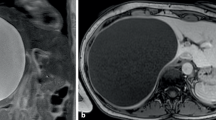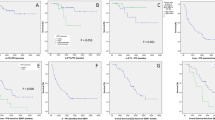Abstract
Percutaneous ablation allows to treat tumors with temperature modifications. These non invasive techniques are useful to treat primitive tumors in fragile patients when a large resection of the non-tumoral parenchyma is not possible. Hepatic colorectal metastases are also treated with these techniques. As a local treatment, surgery is crucial to increase survival of the patients, and radiofrequency ablation allows to open new possibilities for the patients and is also proposed for lung metastases. Ablation techniques are also used for bone metastases to obtain pain relief.
Résumé
L’ablation tumorale percutanée consiste à détruire une tumeur par des modifications de température. Ce que permettent ces techniques peu invasives c’est de traiter des tumeurs tout en épargnant le parenchyme non tumoral. C’est un atout essentiel pour la prise en charge de tumeurs primitives (hépatocarcinome, carcinomes bronchiques et rénaux) chez des patients fragiles, cirrhotiques, insuffisants respiratoires ou rénaux. Les métastases hépatiques des cancers colorectaux sont aussi traitées de cette façon. Il est admis qu’en réséquant les métastases, la chirurgie prolonge nettement la survie et guérit certains patients. La radiofréquence a permis d’élargir les propositions thérapeutiques. Traiter localement des métastases est donc un enjeu pour ces patients, appliqué à d’autres sites comme les métastases pulmonaires. Enfin, ces techniques d’ablation sont utilisées dans le traitement antalgique des métastases osseuses.
Similar content being viewed by others
Références
Belghiti J, Carr BI, Greig PD, et al. (2008) Treatment before liver transplantation for HCC. Ann Surg Oncol 15: 993–1000
Bolliger CT, Perruchoud AP (1998) Functional evaluation of the lung resection candidate. Eur Respir J 11: 198–212
Callstrom MR, Charboneau JW, Goetz MP, et al. (2006) Image-guided ablation of painful metastatic bone tumors: a new and effective approach to a difficult problem. Skeletal Radiol 35: 1–15
Chen MS, Li JQ, Zheng Y, et al. (2006) A prospective randomized trial comparing percutaneous local ablative therapy and partial hepatectomy for small hepatocellular carcinoma. Ann Surg 243: 321–8
de Baère T, Palussière J, Aupérin A, et al. (2006) Midterm localefficacy and survival after radiofrequency ablation of lung tumors with minimum follow-up of 1-year: prospective evaluation. Radiology 240: 587–96
de Baère T, Risse O, Kuoch V, et al. (2003) Adverse events during radiofrequency treatment of 582 hepatic tumors. AJR Am J Roentgenol 181: 695–700
Elias D, Baton O, Sideris L, et al. (2004) Local recurrences after intraoperative radiofrequency ablation of liver metastases: a comparative study with anatomic and wedge resections. Ann Surg Oncol 11: 500–5
Elias D, Liberale G, Vernerey D, et al. (2005) Hepatic and extrahepatic colorectal metastases: when resectable, their localization does not matter, but their total number has a prognostic effect. Ann Surg Oncol 12: 900–9
Gianfelice D, Khiat A, Amara M, et al. (2003) MR imaging-guided focused US ablation of breast cancer: histopathologic assessment of effectiveness: initial experience. Radiology 227: 849–55
Gillams AR, Lees WR (2009) Five-year survival in 309 patients with colorectal liver metastases treated with radiofrequency ablation. Eur Radiol 19: 1206–13
Goetz MP, Callstrom MR, Charboneau JW, et al. (2004) Percutaneous image-guided radiofrequency ablation of painful metastases involving bone: a multicenter study. J Clin Oncol 22: 300–6
Grenier N, Trillaud H, Palussière J, et al. (2007) Therapies by focused ultrasound. J Radiol; 88: 1787–800
Grieco CA, Simon CJ, Mayo-Smith WW, et al. (2006) Percutaneous image-guided thermal ablation and radiation therapy: outcomes of combined treatment for 41 patients with inoperable stage I/II nonsmall-cell lung cancer. J Vasc Interv Radiol 17: 1117–24
Kastler B, Jacamon M, Aubry S, et al. (2007) Combined bipolar radiofrequency and cementoplasty of bone metastases. J Radiol 88: 1242–7
Kunkle DA, Uzzo RG (2008) Cryoablation or radiofrequency ablation of the small renal mass: a meta-analysis. Cancer 113: 2671–80
Lanuti M, Sharma A, Digumarthy SR, et al. (2009) Radiofrequency ablation for treatment of medically inoperable stage I non-small cell lung cancer. J Thorac Cardiovasc Surg 137: 160–6
Lencioni R, Crocetti L, Petruzzi P, et al. (2008) Doxorubicin-eluting bead-enhanced radiofrequency ablation of hepatocellular carcinoma: a pilot clinical study. J Hepatol 49: 217–22
Lepetit-Coiffé M, Laumonier H, Seror O, et al. (2010) Real-time monitoring of radiofrequency ablation of liver tumors using thermal-dose calculation by MR temperature imaging: initial results in nine patients, including follow-up. Eur Radiol 20: 193–201
Livraghi T, Meloni F, Di Stasi M, et al. (2008) Sustained complete response and complications rates after radiofrequency ablation of very early hepatocellular carcinoma in cirrhosis: is resection still the treatment of choice? Hepatology 47: 82–9
Lu DS, Raman SS, Vodopich DJ, et al. (2002) Effect of vessel size on creation of hepatic radiofrequency lesions in pigs: assessment of the “heat sink” effect. AJR Am J Roentgenol 178: 47–51
Murat FJ, Poissonnier L, Pasticier G, et al. (2007) High-intensity focused ultrasound (HIFU) for prostate cancer. Cancer Control 14: 244–9
Pennathur A, Luketich JD, Abbas G, et al. (2007) Radiofrequency ablation for the treatment of stage I non-small cell lung cancer in high-risk patients. J Thorac Cardiovasc 134: 857–64
Qiao X, Tullgren O, Lax I, et al. (2003) The role of radiotherapy in treatment of stage I non-small cell lung cancer. Lung Cancer 41: 1–11
Ruers T, Joosten JJ, Wiering B, et al. (2007) Comparison between local ablative therapy and chemotherapy for non resectable colorectal liver metastases: a prospective study. Ann Surg Oncol 14: 1161–69
Seror O, N’Kontchou G, Ibraheem M, et al. (2008) Large (≥ 5.0 cm) HCCs: multipolar RF ablation with three internally cooled bipolar electrodes: initial experience in 26 patients. Radiology 248: 288–96
Shinohara K (2007) Cryotherapy. Int J Clin Oncol; 12: 416–26
Simon CJ, Dupuy DE, DiPetrillo TA, et al. (2007) Pulmonary radiofrequency ablation: long-term safety and efficacy in 153 patients. Radiology 243: 268–75
Simon CJ, Dupuy DE, Mayo-Smith WW (2005) Microwave ablation: principles and applications. Radiographics 25: S69–S83
Steinke K, Sewell PE, Dupuy D, et al. (2004) Pulmonary radiofrequency ablation: an international study survey. Anticancer Res 24: 339–43
The International Registry of Lung Metastases (1997) Resection of lung metastases: long-term results and prognostic analysis based on 5 206 cases? J Thorac Cardiovasc Surg 113: 37–49
Timmerman RD, Park C, Kavanagh BD (2007) The North American experience with stereotactic body radiation therapy in non-small cell lung cancer. J Thorac Oncol 2: S101–S12
Treasure T (2008) Pulmonary metastasectomy for colorectal cancer: weak evidence and no randomised trials. Eur J Cardiothorac Surg 33: 300–2
Yamakado K, Inoue Y, Takao M, et al. (2009) Long-term results of radiofrequency ablation in colorectal lung metastases: single center experience. Oncol Rep 22: 885–91
Yan TD, King J, Sjarif A, et al. (2006) Percutaneous radiofrequency ablation of pulmonary metastases from colorectal carcinoma: prognostic determinants for survival. Ann Surg Oncol 13: 1529–37
Author information
Authors and Affiliations
Corresponding author
About this article
Cite this article
Palussière, J. L’ablation tumorale percutanée: où en est-on ?. Oncologie 12, 213–218 (2010). https://doi.org/10.1007/s10269-010-1871-1
Received:
Accepted:
Published:
Issue Date:
DOI: https://doi.org/10.1007/s10269-010-1871-1




